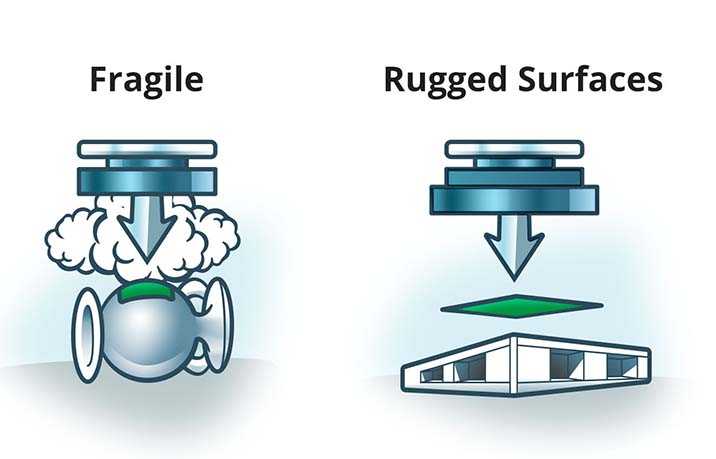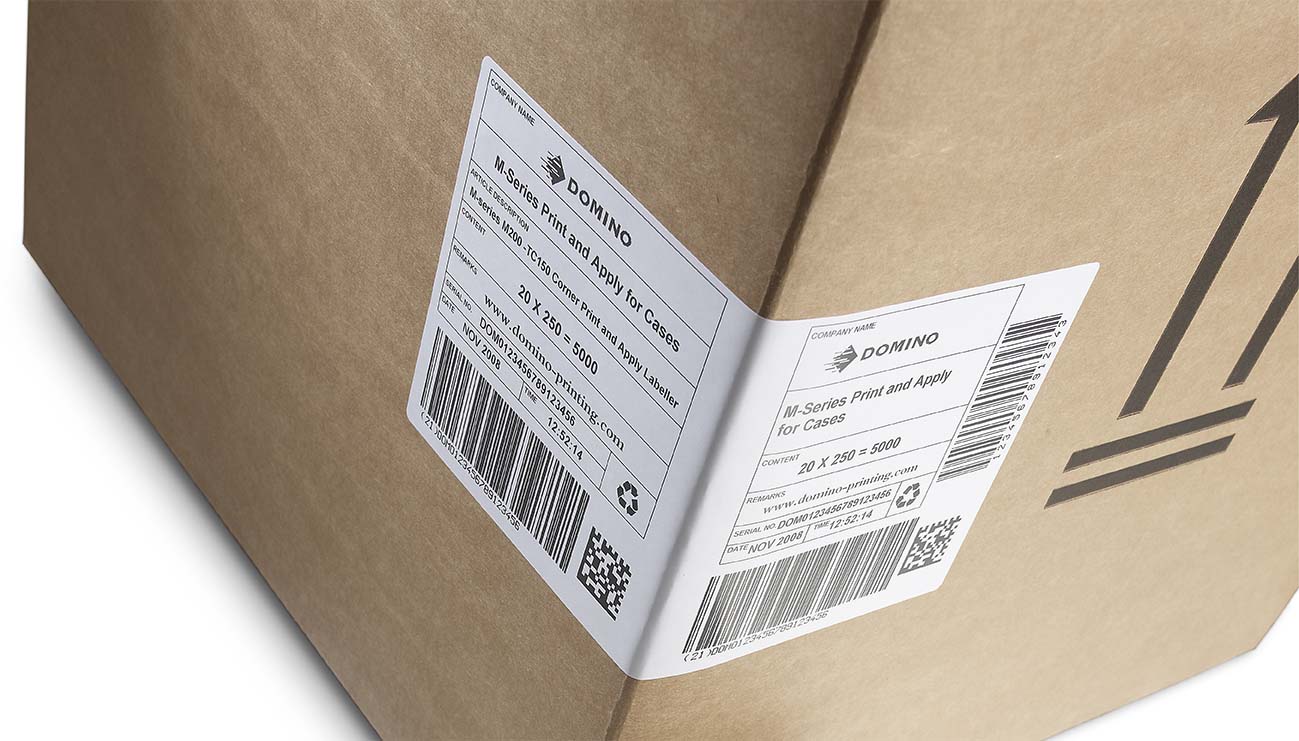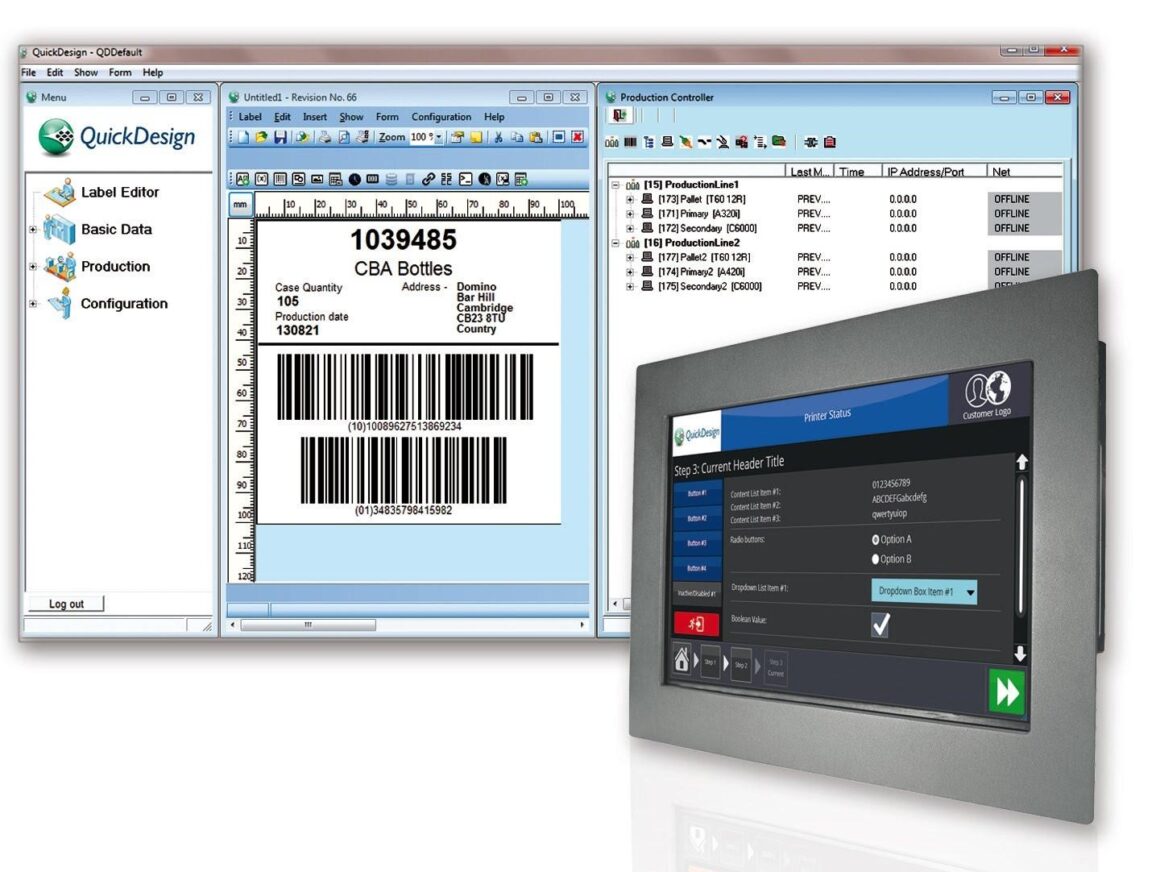What is Print and Apply Labelling?
Accurate and efficient labelling is an integral part of successful manufacturing and logistics. When labelling is done well it can help ensure a smooth production process, but equally, if done inefficiently, it can cost a business time and money. Though there are various options available to users, print and apply labelling is unparalleled in its ease of use, its low cost of ownership and its efficiency.
Print and apply labelling lets users create and apply labels directly onto a product and its packaging. These labels can carry data such as alphanumeric text, barcodes, serialisation, 2D codes, QR codes, addressing, personalisation, graphics and more in an accurate and cost-effective way. Using print and apply technology can increase efficiency in a number of ways, helping you reduce scrap reruns, human error and labour costs and letting you focus on meeting customer demands and core requirements.
Here we dive into some essential learnings to help you better understand the basics of print and apply labelling.
What can you label?
Secondary and tertiary packaging like cartons, boxes and pallets are common applications, and relatively simple to manage. Applications like tyres, bottles and bread will require different labelling techniques. Odd or unevenly shaped surfaces can create a label application challenge, but there are plenty of different print and apply machines, giving users a range of application methods to choose from. The blow on method is best for fragile and odd shapes. Rugged surfaces can be labelled by using a press on pad – this is called a Tamp application.

How will you apply the label?
Make sure you define the size of the label needed relative to the space it will occupy – typically this will be measured by the width and length. Then, think about which application method suits your needs. When applying the label there are four basic methods you can use. Blow method is fast, easy and relatively cost-effective, but it’s not necessarily the most accurate method. Tamp is the most common method, well suited to most scenarios. A combined tamp and blow method is useful for sticking to uneven surfaces. Lastly, the wipe method suits long labels in particular.
The labelling machines themselves are designed to integrate to diverse production line layouts. They come in left and right hand versions and can be designed to mount at varying angles – empowering you with flexible options for seamless integration into your manufacturing process and environment. At printDATA we can even design custom-made label applicator sizes for special labelling requirements or products.
Where can the label be applied?
PrintDATA’s print and apply labelling technology is engineered to provide multiple options for where to place the label on the product. Labels can be printed and applied to side, top, front, back, bottom or even over a corner. There is also the ability to apply multiple labels on a single product. Chances are, we can find a way to put a label wherever you want it.

Integrating to your production line
The nuances of your production line are a key consideration when choosing print-and-apply technology. Not only does your machine need to accommodate the location of the product as it passes through, but it must also be small and flexible enough to fit in the physical space available in your production environment. Our print and apply machines have been uniquely designed to work efficiently in even the tightest production environments. They’re also available in different angles depending on label requirements.
Software is also a key consideration. It’s not much use automating the printing side without having highly automatic data entering systems for the label information. It is usually best to pull data from existing ERP systems rather than having it entered manually.
A focused site visit to audit the production line and define the specific user requirements would ensure the environmental context and project specifics are researched. This would ensure the appropriate print and apply labelling technology and software is identified.

Increasing efficiency
When you’re considering the advantages of investing in print and apply labelling, remember that it’s considerably faster and more reliable than manual processes – reducing wastage, potential errors, running costs and potentially making your business more profitable and less stressful. Our print and apply technologies are designed to integrate with your packaging and processing technology, are programmed to work in tandem with most label creation software platforms, letting you add unique codes and labels to product and packaging in one smooth, controlled and automated process.
The speed of automated labelling equipment can bring multiple benefits to your business. Removing the need for employees to manually print and stick labels reduces downtime and wastage. It increases speed and the opportunity to reallocate team member’s skills and resource to more important, value-add operations. At the same time, this intuitive system eliminates the need to stockpile large amounts of labels for specific products, instead allowing specific labels to be printed on demand.
Demand amongst businesses for print and apply labelling technology is expected to continue to grow globally due to increased automation, traceability, security, and continuous improvement drivers in the manufacturing and logistics sectors.
To get started with print and apply labelling, contact us today. We’ll be happy to discuss the best solution for your business, as well as providing further information on the benefits of this process.
We are experts in print and apply label technology and have helped many businesses save time and money on their labelling needs. Our experienced team will work with you to understand your requirements so that we can develop a solution that meets both yours and your customers’ needs.